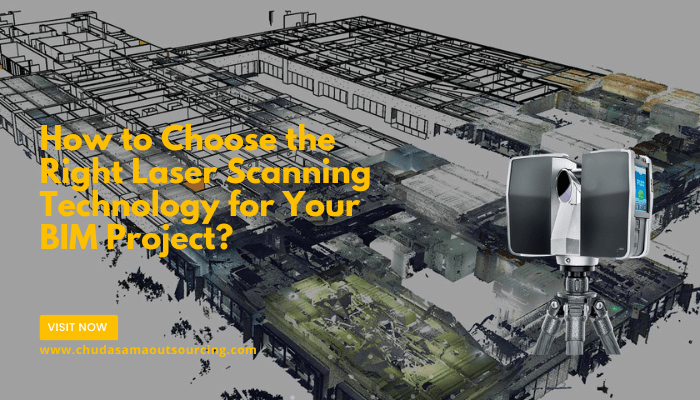How to Choose the Right Laser Scanning Technology for Your BIM Project?
Laser Scan to BIM Services

Laser Scanning: How Does It Work?
In recent years, laser scanning has been advancing steadily to provide quicker and more precise scanning outcomes.
Advantages of Laser Scanning Technology
- Detailed Design Assessment:
The thorough and in-depth study and analysis of the structure or its architecture is the first stage that must be taken into account while operating on a refurbishment or restoration project, and this validates the entirely new design. This project’s execution aids in the creation of a precise 3D model that includes all the intricacies and other MEP elements. The following stage of the project, collision detection and modification of the structure, is carried out using these developed BIM models. Laser Scan to BIM Modeling Services provides access to the project’s most precise information.
- Structure Evaluation:
An essential component is the examination of the building model, which can only be done with the use of laser scanning technology. This service helps with understanding the condition of the building’s structure, components, or design as well as assessing and calculating the general information that may come up during the rebuilding phase. Planning, pricing, predicting, timelines, and a work plan are all included in the estimation.
- Effortless Teamwork and Collaboration:
Proper teamwork and collaboration are essential to the success of any project. The finest part of laser scanning services is the 3D models produced by the scan machines’ coordination, which also fosters balanced communication skills among the project’s participants.
- Further Design and Planning:
The very first step that has to be conducted prior to construction is to assess the structure’s existing state and determine whether it conflicts with any recently developed plans. Because of the laser scans which have been acquired, the proportions and the specifics are precise. This procedure helps to have appropriate, accurate, and appropriate planning for the 3D Revit Modeling.
- Reducing Risk:
The risk associated with the total project is greatly decreased with the aid of laser scanning services. The amount of modification required and the associated risk are both significantly decreased as a result of all the information collected using laser scanning methods.
Conclusion
The foundation of construction projects is BIM. Building Information Modeling is allowing new methods of working for improved design, execution, and upkeep of physically constructed facilities thanks to digital technologies, like 3D Laser Scanning technology.












